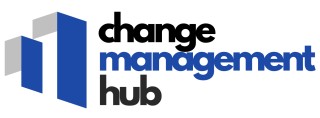
Understanding the Prosci Methodology
How the Prosci Methodology Shapes Change Management
The Prosci methodology is a structured approach that guides organizations through the complexities of change management. Its principal focus is on the people side of change, emphasizing that successful change requires more than just a new system or process. It demands adoption, commitment, and engagement from those it affects most—employees. This human-centered view is crucial to managing both individual and organizational change effectively. Understanding Prosci's methodology begins with its focus on structured processes. This approach offers a comprehensive framework for managing both project and organizational-level changes, streamlining each phase process to align with the specific needs and dynamics of the change scenario at hand. For those within the industry, Prosci provides tools that aid in predicting potential challenges that teams might face in the transition to new processes. This foresight is crucial in agile change environments where the intricate blend of project management and change management is often required.The Link to Professional Development Through Prosci Certification
Professionals seeking to specialize in change management often turn to Prosci for structured training. The Prosci certification equips change practitioners with essential skills, enhancing their ability to manage change and gain stakeholder buy-in. This training emphasizes the iterative nature of change management, often intertwining linear project management strategies with adaptive, agile methodologies. For a deeper dive into structured frameworks in change management, you may explore the importance of clarity in project management and how it is essential for navigating complex change effectively.The ADKAR Model: A Core Component
The Essential Building Blocks
The Prosci change management methodology relies heavily on the ADKAR model, which is instrumental in facilitating organizational change successfully. Developed as a fundamental part of the Prosci approach, ADKAR is an acronym that encapsulates the five essential building blocks of change: Awareness, Desire, Knowledge, Ability, and Reinforcement. These stages help manage change by offering a structured framework to guide individuals and ensure they adapt smoothly to new organizational processes.
From Individual Change to Organizational Success
While the ADKAR model focuses primarily on individual change, its effectiveness in managing organizational change is noteworthy. The model assists in identifying and addressing the underlying factors that impact each employee's capacity to change. As a part of the Prosci methodology, ADKAR emphasizes the human side of change management, enabling managers to better prepare, involve, and support employees throughout various phases of change. For more insights on understanding organizational processes, read understanding clarity PPM in change management.
Integrating ADKAR in Agile Environments
The Prosci ADKAR model can be adapted to agile change environments, where flexibility and rapid iterations are key to success. By addressing individual needs, the model ensures that people-related issues do not hinder project management efforts. This adaptability makes ADKAR a valuable tool for any organizational change initiative, serving as a comprehensive framework for change practitioners looking to achieve desired outcomes in any agile setting.
Pathway to Professional Development
Achieving expertise in the ADKAR model often involves pursuing Prosci certification and training. Such credentials demonstrate a comprehensive understanding of the approach, its tools, and its application in managing change effectively across various sectors. Earning these certifications can greatly enhance a change practitioner's professional development, empowering them to manage organizational change with confidence and authority.
Benefits of Using Prosci for Change Management
Enhancing Change Management with Prosci
Utilizing the Prosci approach in organizational change management provides a structured methodology that prioritizes people. This method revolves around the ADKAR model—a fundamental element that supports individual change, which in turn contributes to overall organizational success. Instituting change is never a straightforward task, and the Prosci change management model furnishes tools and frameworks designed to facilitate this process effectively. The Prosci methodology provides a comprehensive framework for project management, balancing the technical side with the often-overlooked people side of change. As individuals within the organization are guided through each phase of the change process, they are equipped with the knowledge and skills necessary to adapt, thereby enhancing the likelihood of success.Streamlined Change Processes with Prosci Certification
Organizational change practitioners who undertake Prosci certification gain in-depth insights and agile tools to manage change efficiently. The training focuses on how to apply, integrate, and thrive with the ADKAR model's principles in various settings, which is crucial for projects requiring swift adaptation to be successful. Navigating through change management with a certified approach, practitioners are enabled to objectively analyze, plan, and execute changes across different phases. This provides a solid foundation that scaffolds the process, enabling a smooth transition and integration at every level of the organizational strata.Fostering Professional Development through Prosci Methodology
Leveraging the Prosci methodology does not only catalyze project-specific outcomes but also promotes professional development among employees. The approach serves as a catalyst for fostering an agile learning culture. When individuals within an organization are equipped with Prosci's tools, they are empowered to manage change more effectively, thus contributing to the growth and success of the organization. This also encourages an environment ripe for learning and development, helping retain talent. The Prosci phase methodology texts and resources work to ensure that all involved parties are on the same page, thus fostering a unified effort towards achieving the desired change. By implementing these practices, organizations are not only driving change but laying the groundwork for a robust, sustainably agile workplace. To gain more insights on what truly makes a workplace intelligent, consider exploring what makes a workplace truly intelligent.Common Challenges in Change Management
Challenges in Implementing Prosci Techniques
When organizations adopt the Prosci approach for change management, they often confront several challenges that can impact the success of their initiatives. Understanding the complexities involved can pave the way for smoother transitions.- Resistance to Change: People are naturally resistant to change, which can be a significant barrier when implementing the Prosci ADKAR model. Change practitioners must engage employees and address their concerns to foster a positive attitude towards new processes.
- Aligning Organizational Goals: Ensuring that the change management efforts align with overall organizational objectives is critical. Misalignment can lead to confusion and reduced support from key stakeholders, stalling progress.
- Training and Certification Needs: The complexity of the Prosci methodology requires thorough training, potentially through Prosci certification programs. Some organizations might find it challenging to allocate time and resources for comprehensive training sessions.
- Adapting to Agile Environments: While the Prosci model is robust, its traditional approach might require adjustments to fit more agile change environments. This involves modifying phases of the Prosci process to accommodate rapid iterations and feedback loops.
- Resource Allocation: Effective change management necessitates proper allocation of resources, including time, personnel, and tools. Organizations often struggle with providing adequate resources due to budget constraints or competing priorities.
- Consistency in Application: Maintaining consistency across various project management teams when applying the Prosci methodology can be difficult. A lack of uniformity might result in disparate change management practices within the same organization.
Case Studies: Prosci in Action
Real-World Applications of the Prosci Methodology
Implementing the Prosci methodology in organizational change initiatives has proven effective across various industries. By focusing on the people side of change, organizations can navigate the complexities of transformation more smoothly. Here are some examples of how the Prosci approach has been successfully applied:
- Technology Sector: A major tech company faced challenges in adopting a new agile change process. By utilizing the Prosci ADKAR model, they were able to address individual change resistance, leading to a more seamless transition. The structured phase process helped align employees with the organizational change goals, ensuring project success.
- Healthcare Industry: In a large healthcare organization, the implementation of a new electronic health record system required significant change management efforts. Prosci's tools and training provided the necessary framework to manage change effectively. The focus on professional development and management certification empowered change practitioners to guide the organization through each phase.
- Financial Services: A financial institution undergoing a merger leveraged the Prosci methodology to integrate different organizational cultures. The ADKAR model facilitated communication and engagement, helping employees adapt to new processes and systems. This approach minimized disruption and enhanced overall organisational change management.
These case studies highlight the adaptability and effectiveness of the Prosci methodology in diverse settings. By prioritizing the people side of change and utilizing structured tools and training, organizations can achieve successful transformations.
Getting Started with Prosci
Embarking on Your Prosci Journey
Starting with the Prosci approach to change management can be a transformative step for any organization looking to manage change effectively. The journey begins with understanding the core components of the Prosci methodology, including the ADKAR model, which emphasizes individual change as a foundation for organizational success.
Training and Certification
To effectively implement the Prosci methodology, consider enrolling in Prosci certification programs. These programs offer comprehensive training on the ADKAR model and other essential tools for managing change. Certification not only enhances your professional development but also equips you with the skills to lead successful change initiatives.
Building a Change Management Team
As you get started, assembling a dedicated change management team is crucial. This team should include change practitioners who are well-versed in the Prosci approach. Their expertise will guide the organization through each phase of the change process, ensuring that both the people side and the project management aspects are addressed.
Integrating Prosci into Your Organization
Integrating the Prosci methodology into your organizational processes requires a strategic approach. Begin by aligning the methodology with your existing project management practices. This alignment will facilitate a smoother transition and help manage change more effectively. Consider adopting agile change techniques to enhance flexibility and responsiveness during the change process.
Utilizing Prosci Tools and Resources
Prosci offers a variety of tools and resources to support your change management efforts. These include templates, guides, and software solutions designed to streamline the change process. Leveraging these resources can significantly enhance your ability to manage change and achieve desired outcomes.
Continuous Learning and Adaptation
Finally, remember that change management is an ongoing process. Stay committed to continuous learning and adaptation. Regularly update your knowledge of the Prosci methodology and remain open to new strategies and tools that can improve your change management practices. This commitment will ensure long-term success and organizational resilience.













